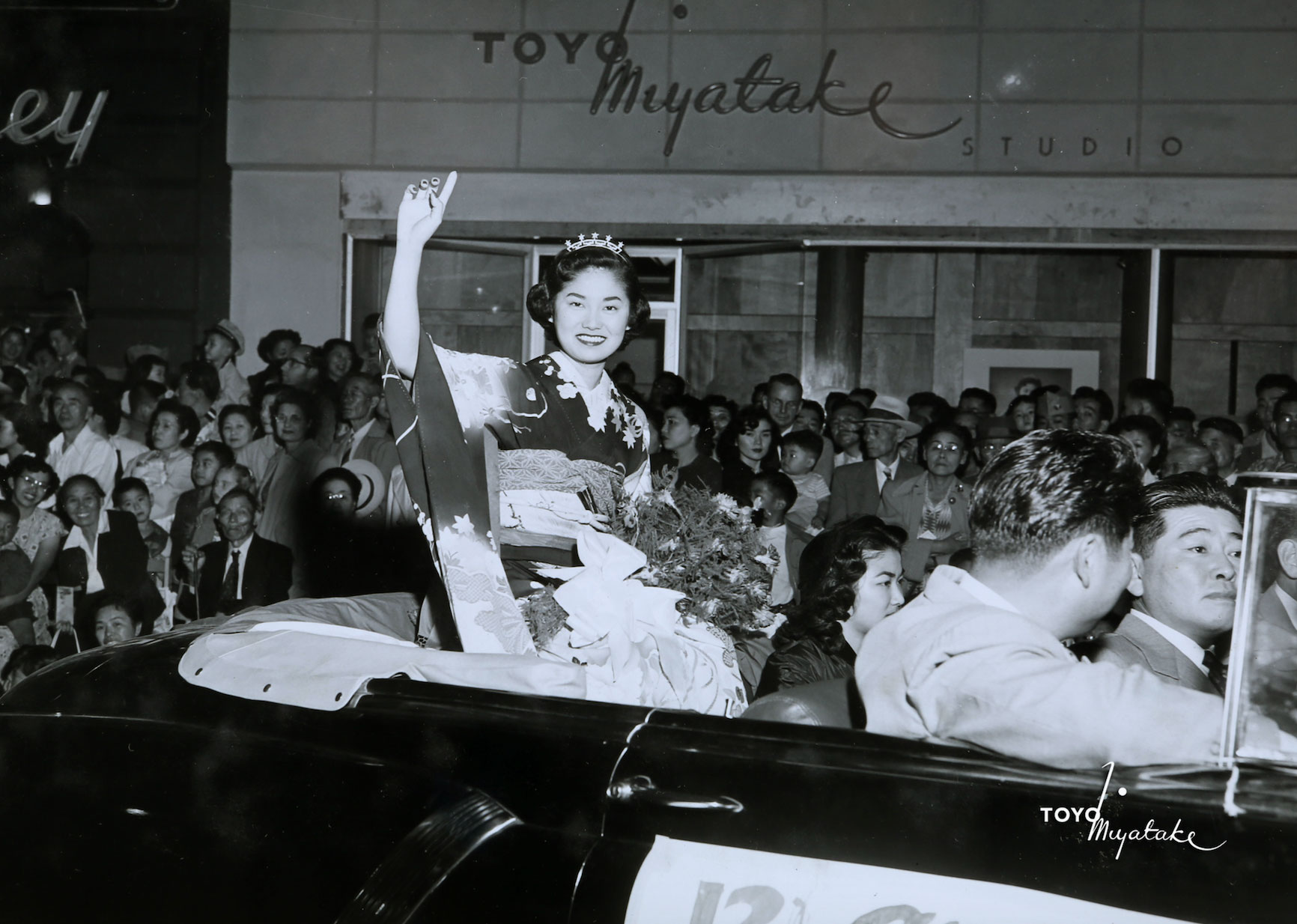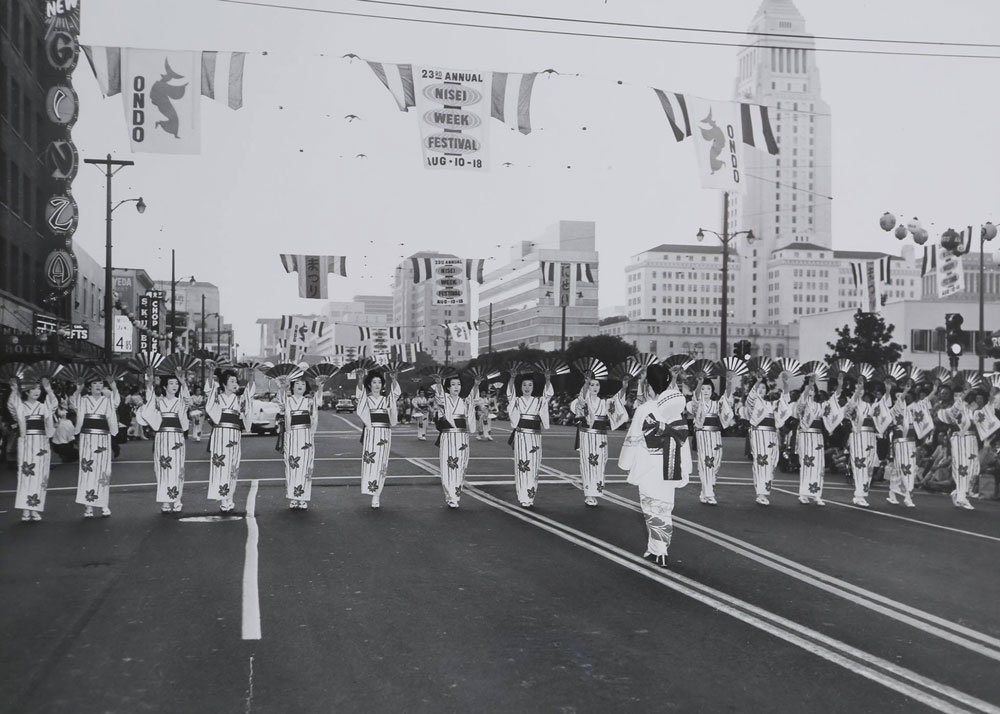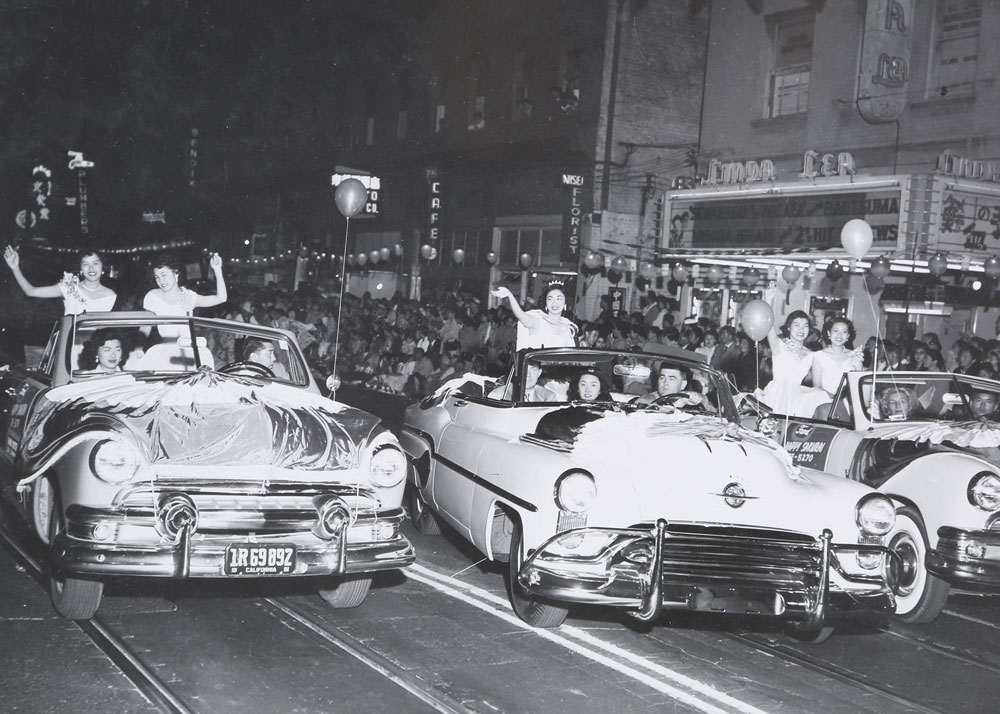Nisei Week is made possible by a team of dedicated, community-minded volunteers, spanning multiple generations
Mission Statement
To promote Japanese and Japanese American heritage and traditions while bringing together the diverse communities of Southern California through arts and cultural education.
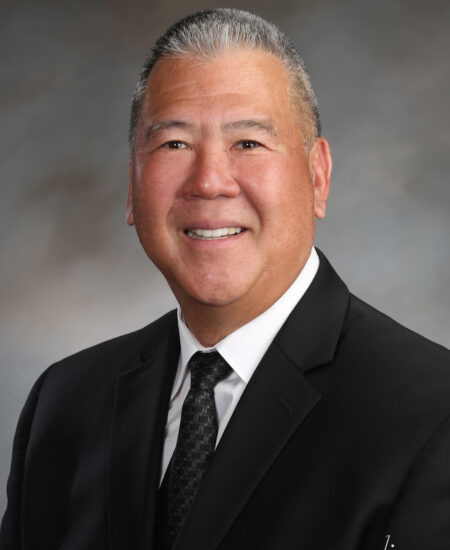
President’s Message
Dear Nisei Week Friends and Family,
On behalf of the Nisei Week Foundation’s Board of Directors, committee chairs, and volunteers, I welcome you to the 81st Annual Nisei Week Japanese Festival. I was born and raised in Los Angeles and grew up enjoying the many activities associated with the festival. I now have the honor of representing the Nisei Week Foundation, as president for 2023.
The Nisei Week Foundation is a non-profit organization that produces a nine-day festival to celebrate and share the Japanese and Japanese American culture. As Southern California’s largest and longest running ethnic festival, we are proud to share this memorable event with the community. During the festival, several events, including the Baby Show, Coronation, Grand Parade, Plaza Festival, Awards Dinner, Pioneer Spirit Award Luncheon, exhibits, Karate Demonstrations, Ondo Street Dancing, and Closing Ceremony will be taking place at various locations throughout Little Tokyo. Please take the time to attend, observe and participate in all these events.
This year’s theme is “Turning the Corner”. It is our hope that as the threat of the pandemic stabilizes, we can return to celebrating the Nisei Week Festival as we have done in previous years. As the demographics of Little Tokyo continue to change, it is paramount to our community to continue to support the Nisei Week Festival and ensure the legacy of our founders live on.
I would like to thank the board of directors, committee chairs and the hundreds of volunteers for their hard work in presenting another successful Nisei Week Japanese Festival. In addition, I wish to extend my gratitude to our generous sponsors. Your support truly helps the Nisei Week Foundation continue our festival on an annual basis.
Sincerely,
DAVID YAMAHATA, President
Nisei Week Foundation
Board of Directors
The Board of Directors is comprised of individuals from the community who volunteer their time to continue the legacy of Nisei Week.
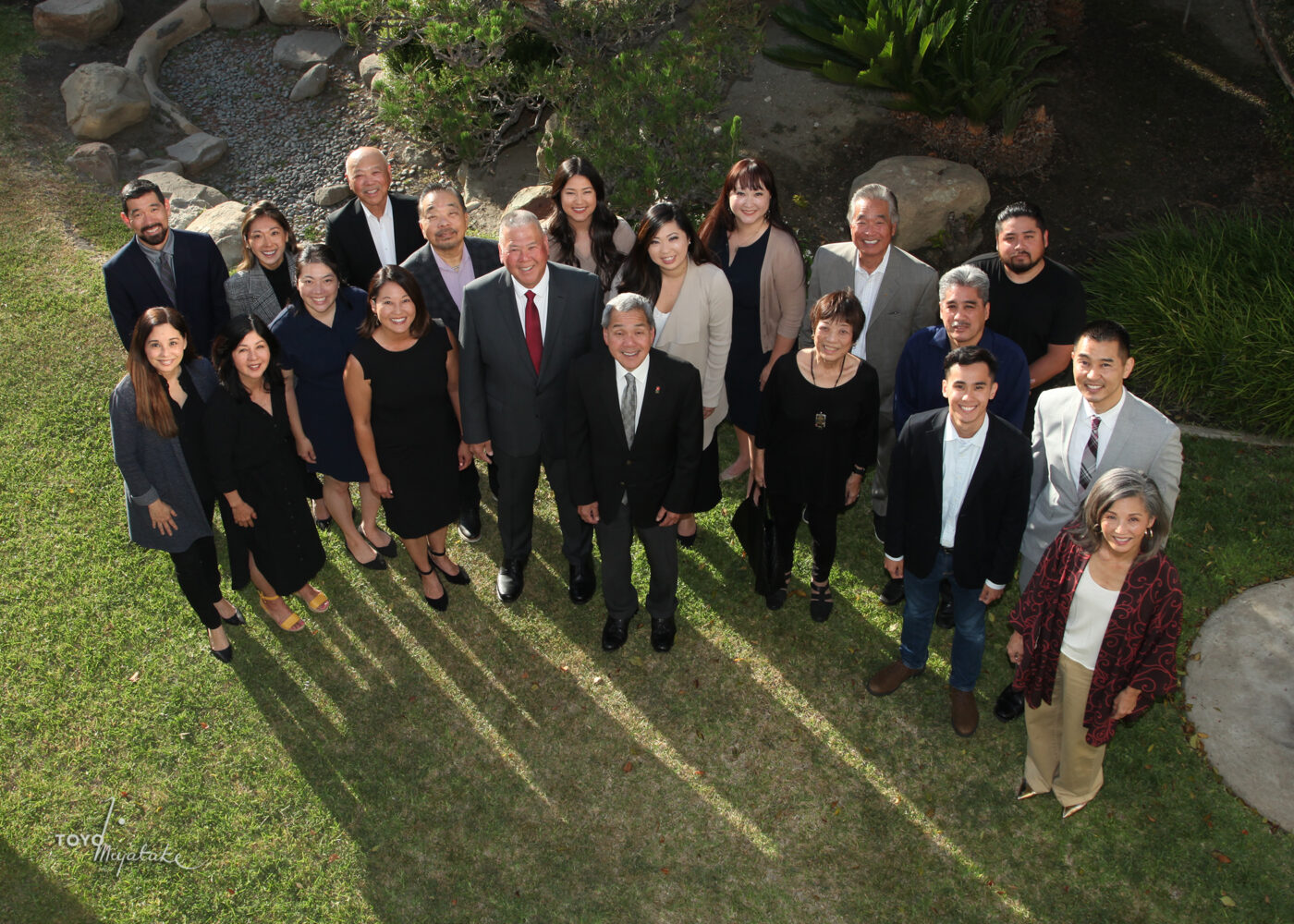
Executive Committee
President
David Yamahata
President-Elect
Joann Cordeiro
Immediate Past Co-Presidents
Cory Hayashi & Nancy Okubo
Treasurer
Jerry Fukui
Secretary
Akiko Nishino
VP, Events & Programming
Todd Odagawa
VP, Marketing
Cory Hayashi
VP, Development
Nancy Okubo
Board of Directors
Joyce Chinn
Nolan Maehara
James Okazaki
Kay Takano
Leiton Hashimoto
Masako Miki
Helen H. Ota
Jessica Tateishi
Sara Hutter
Mark Nishinaka
Diane Suzuki
Tamlyn Tomita
Keith Inatomi
Walter Nishinaka
Michelle Suzuki
Shannon Tsumaki
Board Fellows
Brandon Chung
Lindsey Sugimoto
Nisei Week History: A Love Letter to Little Tokyo
By Gwen Muranaka: Senior Editor of the Rafu Shimpo
The hopes, dreams and aspirations of Japanese Americans are embodied by what has become a beloved yearly tradition: the Nisei Week Japanese Festival. Nisei Week is one of the longest running ethnic festivals in the United States. But how did this come to be?
The Dreams of Issei
The story of Nisei Week and the downtown Los Angeles neighborhood of Little Tokyo are intertwined. Little Tokyo, established in 1886, was the central hub of activity in Southern California for the first generation Issei, who laid the foundations for the community.
The Issei left far away homes in Japan to journey to America for a better life. For those who settled in Southern California, Little Tokyo became the center of activity for the Japanese community. Farmers toiled in fields and brought their vegetables and flowers to sell at markets in downtown Los Angeles. Women flocked to stores in Little Tokyo to purchase food, clothing and dry goods. Small businesses opened to serve the Japanese community with names such as Kawafuku Cafe, Kyodo Drug, Umeya, Inc., Fugetsu-Do Confectionary, San Kwo Low, and Entoro (Far East Cafe). Kinema theater and Fuji theater screened samurai movies from Japan. The tastes, smells and sights of home could be found here.
On Sundays, Japanese would put on their best clothes and worship at Union Church, Koyasan Buddhist Temple, Maryknoll, Higashi Honganji and Nishi Hongwanji. Little Tokyo is not just a place of commerce, but a sacred gathering space. As the Issei raised their American children – the Nisei – they began to wonder how to pass on their love of Japanese culture and in turn strengthen the community they built. The institutions they created would have to adapt and change.
Newspapers like Rafu Shimpo and Kashu Mainichi were established to report on news and events in the rapidly growing Japanese community. In 1925, Rafu established its English section, under the leadership of Louise Suski, to service a growing second generation, the Nisei. Slowly at first, the Issei passed the leadership on to their children. The first Nisei Week, held in 1934 in the depths of the Great Depression, represented the emergence of the Nisei, who established the festival as a way to bring fresh ideas and new business to Little Tokyo.
Roku Sugahara wrote in 1936: “They (the Issei) bequeathed to their children (the Nisei) the rich heritage of a fine and proud Japanese heritage. They taught the right and honorable way of life to their children. Carry on, become good citizens and develop a fine community.” Hardworking young Nisei formed the core of the festival. Volunteering their time after work, they established many of the events that continue to this day: a baby show, cultural exhibitions and the ondo. Eiji Tanabe served as the first Nisei Week chairman in 1934. The following year saw the debut of the Nisei Week Queen and court, Alice Watanabe was crowned queen. Among the dancers in 1934 were the beautiful, graceful teachers who would lead the Nisei Week Grand Parade for decades: Madame Fujima Kansuma and Madame Hanayagi Tokuyae. In 2018, for her 100th birthday, Madame Kansuma once again choreographed the parade, continuing to be a symbol of hope and inspiration to an entire community.
There is tragic poignance in the moment in August 1941 when Little Tokyo gathered for the eighth Nisei Week Festival. Reiko Inouye reigned as queen, Tanabe once again served as chairman; at the same time the clouds of war were gathering. It would be eight years before the festival would be held once again. In the spring of 1942, at First Street and Central Avenue, next to Nishi Hongwanji Temple, where just months earlier, Japanese Americans celebrated at Nisei Week, they were lined up, with suitcases in hand, to be sent to concentration camps.
The Nisei Week Festival resumed in 1949 as 30,000 Japanese Americans returned to Southern California to rebuild their lives once again. Their message was one of growth and optimism: “Lil Tokyo Looks Ahead: Lil Tokyo has once again become the focal point of a growing southland Japanese American community whose resettlement in the metropolitan area is keeping pace with the spectacular growth of the sprawling city itself.”
The pageantry of the Nisei Week Coronation is the highlight of the festival and while it has changed over the years, little girls still line the streets, dreaming of becoming a queen one day themselves. Penny Tani Sakoda was crowned Nisei Week Queen in 1960. She recalled the thrilling nights at the Nisei Week Carnival and watching the parade from her vantage point on First Street, where her father was famous for the hamburgers he served at Kyodo Grill. The public selected the queen by voting with tickets given out by local merchants. The queen was crowned in a coronation ball held at the Beverly Hilton. “Those were the days!” Sakoda exclaimed.
Hairstyles and hemlines changed over the years, the Nisei Week Queen and princesses have become more diverse, reflecting the changing demographics of the Japanese American community. Today, the queen is announced after an interview session and entertaining pageant, with a decision from judges comprised of community leaders and notable individuals.
The queen and court represent the community at numerous events throughout the year, traveling to Japan, Hawaii and San Francisco. Behind the glamour is a lot of hard work! Em Kato Yamada is often called the “Queen of the Queens.” She reigned in 1952 and a photo shows her regally riding down First Street. In 1984, Em organized the first annual Queens Reunion, which brings this special sisterhood together, its members continue to be volunteers and are an integral part of the success of Nisei Week. The queen legacy welcomed its first mother-daughter queens in Faith Higurashi Ono (1959) and her daughter Naomi Ono Sognefest (1993).
Mom and Pop Businesses
Business leaders have stepped up to support the festival over the decades. The festival, in turn, has brought crowds to shop, eat and play in Little Tokyo since its very beginning. Frances Hashimoto, the late president of Mikawaya Mochi, served as a guiding force for decades until her passing in 2012. The festival named the Frances Hashimoto Community Service Award to honor her legacy. Photographer Alan Miyatake and his daughter, Sydney, continue a tradition started by his grandfather, Toyo Miyatake and Alan’s father, Archie. The Miyatake family have supported Nisei Week as the official photographers from the very beginning.
Irene Tsukada Simonian, third generation owner of Bunkado, explains that Nisei Week “keeps Little Tokyo alive.” As a girl, she and her sister would learn all the dances for the Nisei Week Grand Parade and Ondo but were forbidden by her aunt from participating. “We sell products to all the senseis and she said if we affiliate with one of the dance schools then we would upset everybody else. We had to be neutral,” Irene said, with a laugh.
The store sells uchiwa fans, kachi kachi and other instruments of ondo dancing, serving as an important link to Japan and carries many exquisite hard-to-find items. She notes important parts of Nisei Week are the cultural displays such as kimekomi dolls, ikebana flower arrangement and tea ceremony. “So many crafts are celebrated. The people who are doing the crafts, they are masters and Nisei Week is a big deal for them,” she said.
Hollywood Glamour, J-Town Style
From the first Nisei Week in 1934 when Charlie Chaplin was among the guests, the Japanese festival has always had a certain glamour and style. Photos capture the thrilling glimpses of moments when Hollywood and J-Town royalty connected.
Chaplin came to see the beautiful dancers in kimono and noted that he enjoyed eating teriyaki prepared by his cook. During the 1960s-1970s, entertainers from television, film and stage participated as judges in the Coronation Ball and honored dignitaries in the Grand Parade. Mamie Van Doren, Shirley MacLaine, Wayne Newton, Tab Hunter, James Shigeta, Martin Landau, Mako, and John Saxson were some of the notable celebrities. Toshiro Mifune and Katsu Shintaro, famous for their samurai roles in Japanese cinema, were also popular Nisei Week dignitaries.
Silent film star Sessue Hayakawa reigned as the parade’s first Grand Marshal in 1958. Konosuke Matsushita, Japan’s legendary industrialist and founder of Panasonic, made a special trip to participate as Honorary Grand Marshal in Nisei Week’s bicentennial parade in 1976. A few years later, Karate Kid’s Noriyuki “Pat” Morita was Grand Marshal in 1980. Nisei Week would serve as a launching pad for Tamlyn Tomita, who starred alongside Morita in The Karate Kid Part II. Olympians Kristi Yamaguchi and Mirai Nagasu, grand sumo superstar, Konishiki, Rocky Aoki of Benihana Restaurants, Mike Shinoda of Linkin Park, George Takei of Star Trek, Tommy Lasorda of the LA Dodgers, Lt. Col. Ellison Onizuka and Senator Daniel K. Inouye are among the many luminaries to have graced the parade.
An All-Volunteer Spirit
The essence of Nisei Week is a spirit of helping out and volunteering. The Grand Parade captures this in the many participants who join together on a Sunday in August: Boy Scouts who proudly carry banners; aging veterans, who march with pride; dancers in colorful yukata, martial artists and taiko drummers that keep the party moving to a joyful rhythm. They are old and young, Shin-Issei (first generation immigrants after WWII), Japanese American and also, non-Japanese American, reflecting the City of Los Angeles that we call home. They are families who have been coming for years and first-timers who visit Little Tokyo and fall in love with its charm.
From its very beginnings Nisei Week has been run solely by volunteers. After spending long hours at work, the early pioneers would then devote their time to planning and organizing the festival, which they felt was vital to supporting Little Tokyo and the Japanese American community. It has seen good times and hardship but the festival remains due to the men and women behind it.
“Nisei Week would not be Nisei Week without our volunteers,” says Joyce Wakano Chinn, a festival volunteer since 1974, who runs the office with a dedicated team in the Japanese American Cultural & Community Center in Little Tokyo. “The reason why they started Nisei Week was to set the tone to keep the culture alive and honor the Isseis,” Joyce says. “The festival carries on today as the torch is now passed from the Sansei to Yonsei (third and fourth) generation. The taiko beat sounds the call to come celebrate Japanese and Japanese American culture in Little Tokyo. Our rich Nisei Week legacy lives on throughout our expanding community and dedicated volunteer efforts. There’s a shared spirit in the volunteer hearts that will keep the festival growing and thriving for generations to come.”





